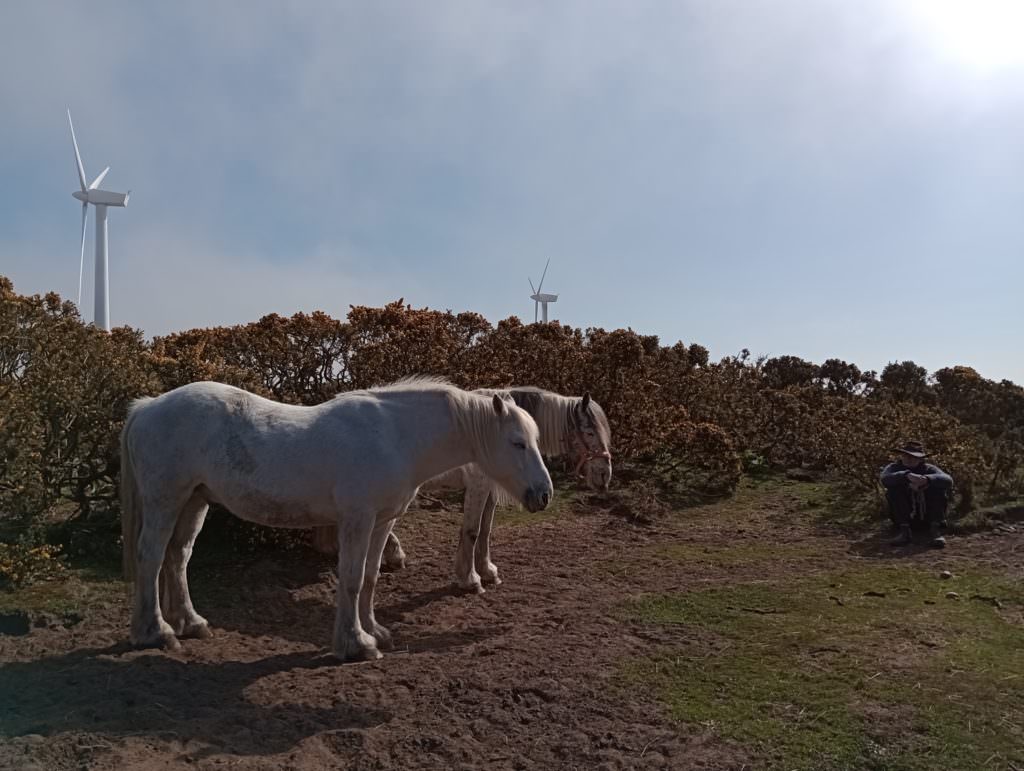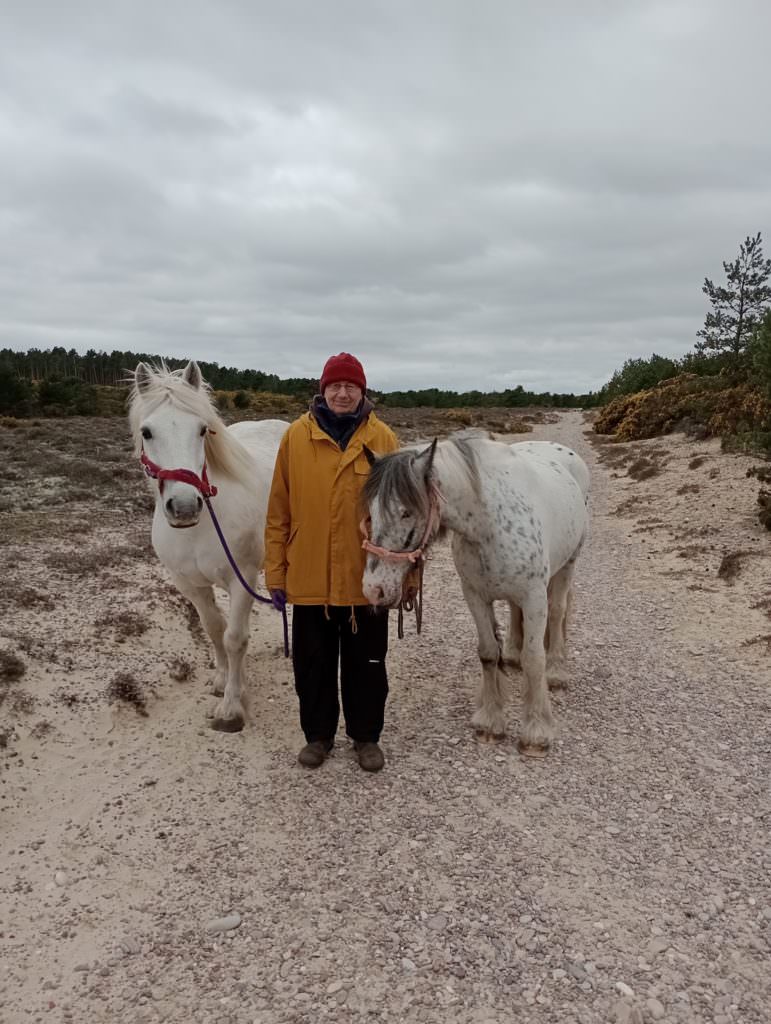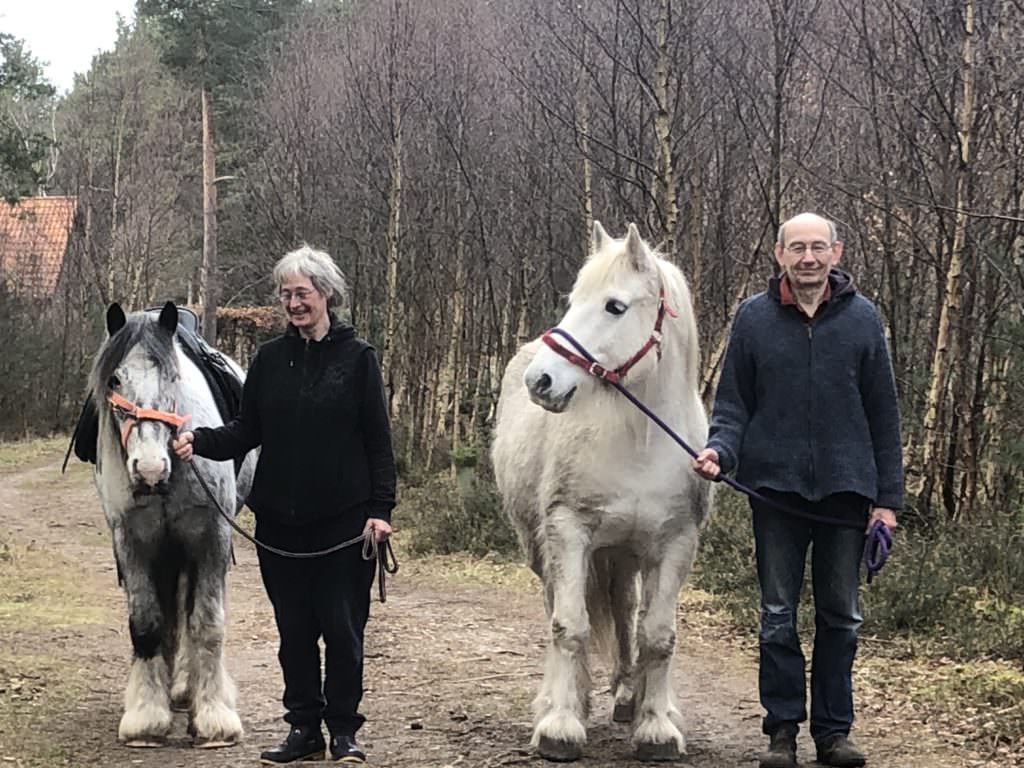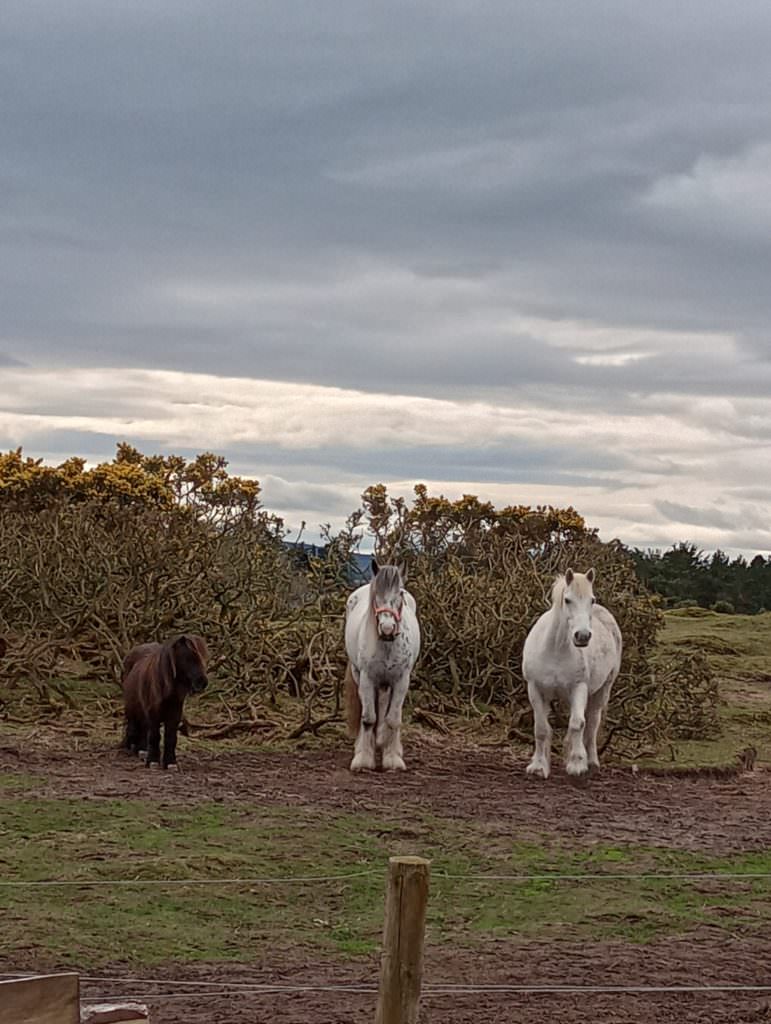With April came spring, the most significant change of season in the pony year: the first spring grass, the end of winter grazing, and a tide of hair flooding out from the field as the woolly winter coat comes off and is replaced by the sleeker and sometimes darker summer coat (prime nest building material!)

We had a successful six months of landscape management grazing, mostly around the middle wind turbine and opposite the South turbine. The South turbine field was upgraded last autumn with a permanent fence and served us well especially in the two winter weeks when the pony field became too dangerous with snow and ice for both ponies and humans. One very icy morning I didn’t even dare to go into the field but just opened the gate and let the ponies find their own way out, placing every hoof very slowly and carefully, and over to the winter grazing field. I’m glad to say we made it through all the winter weathers with no injuries. Another upgrade that made the winter much easier for humans is the fabulous new hay shed: no more blown off tarpaulins, no more puddles on the haystack, and dry tea breaks too. A big thank you to Jonathan and team!

Freshly green and full of sugar, spring grass is wonderful, very welcome – and can be too much. Ponies have sensitive digestive systems and any change can upset them. Not all breeds can handle sugar: little dark Milo’s Shetland genes mean that sugar can trigger laminitis, a very painful inflammation of the feet. He already stopped winter grazing in March, and by the time this newsletter comes out he will have started to spend mornings (when the grass has the highest sugar content) in his pen to keep him healthy. He is not being starved and neglected but on a carefully monitored diet, and please don’t throw grass and other treats over the fence for him!

With the spring weather we enjoy going for walks, a great non-riding way of spending time together. You might meet any combination of ponies and humans on the path around the dunes, building up fitness and training. Jock the Appaloosa cob with the dark spots and I will often look like we’re just pottering about or standing in the sun, when what we really do is intensive training in staying calm, focused and confident in the middle of so many distractions both scary and wonderful. After two years on the Hinterland we’re both doing very well and handle dogs, bikes, chain saws and mysterious bright objects like old pros.
Another question we get now that winter is over is: Can we get manure from you?
Yes you can!
Call Kathryn Kusa on 01309 690712 to find out how it works and when you can come, since one of us needs to be there to let you in and show you where to go.
Katharina Kroeber for the pony team


















Greetings from the pony field!
With April came spring, the most significant change of season in the pony year: the first spring grass, the end of winter grazing, and a tide of hair flooding out from the field as the woolly winter coat comes off and is replaced by the sleeker and sometimes darker summer coat (prime nest building material!)
We had a successful six months of landscape management grazing, mostly around the middle wind turbine and opposite the South turbine. The South turbine field was upgraded last autumn with a permanent fence and served us well especially in the two winter weeks when the pony field became too dangerous with snow and ice for both ponies and humans. One very icy morning I didn’t even dare to go into the field but just opened the gate and let the ponies find their own way out, placing every hoof very slowly and carefully, and over to the winter grazing field. I’m glad to say we made it through all the winter weathers with no injuries. Another upgrade that made the winter much easier for humans is the fabulous new hay shed: no more blown off tarpaulins, no more puddles on the haystack, and dry tea breaks too. A big thank you to Jonathan and team!
Freshly green and full of sugar, spring grass is wonderful, very welcome – and can be too much. Ponies have sensitive digestive systems and any change can upset them. Not all breeds can handle sugar: little dark Milo’s Shetland genes mean that sugar can trigger laminitis, a very painful inflammation of the feet. He already stopped winter grazing in March, and by the time this newsletter comes out he will have started to spend mornings (when the grass has the highest sugar content) in his pen to keep him healthy. He is not being starved and neglected but on a carefully monitored diet, and please don’t throw grass and other treats over the fence for him!
With the spring weather we enjoy going for walks, a great non-riding way of spending time together. You might meet any combination of ponies and humans on the path around the dunes, building up fitness and training. Jock the Appaloosa cob with the dark spots and I will often look like we’re just pottering about or standing in the sun, when what we really do is intensive training in staying calm, focused and confident in the middle of so many distractions both scary and wonderful. After two years on the Hinterland we’re both doing very well and handle dogs, bikes, chain saws and mysterious bright objects like old pros.
Another question we get now that winter is over is: Can we get manure from you?
Yes you can!
Call Kathryn Kusa on 01309 690712 to find out how it works and when you can come, since one of us needs to be there to let you in and show you where to go.
Katharina Kroeber for the pony team